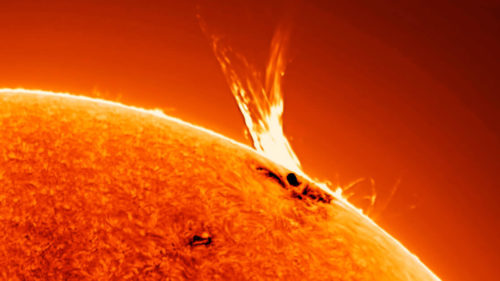
(continued from part 1)
Uniformity of the etalon plates
To continue where I left off in my last post, this widening of the BP from center to edge can be caused uniformity of the etalon plates, over-attenuation of the etalon via excessive tilting, differential heating (i.e., edge heating a solid etalon), or differential pressure to the etalon via mechanical compression or improper support of the etalon.
This is the very reason that Lunt utilizes a system whereby the etalon is supported in the ideal position within the optical train. This allows for full aperture illumination of the filter for full disk viewing. Each Lunt OTA aperture has a matching sized etalon. For example, our 60mm telescope has an internal etalon with an aperture of 35mm. Our 152mm Telescope has an internal etalon with a matching aperture of 75mm.
While the difference itself to the general “specification” might seem small, it is what the secondary filter does to the base of the transmission curve that really matters. It is this reduction in transmission of light outside the desired wavelength that makes all the difference. This is something that cannot be done effectively with a single filter.
Single Filter systems
To answer the question: Can a Single Filter system work the same as a Double Stack filter system? The answer is probably not. The typical specifications are generally misleading if they merely note the FWHM. For a system like a Solar Telescope, it is what is happening at the 1 – 2%T points that need to be addressed by DS.
The same set of specifications defines all Etalons. Etalons generally exhibit the same transmission characteristics.
What is generally missing from the published specifications is the % of total transmission of the Etalon at the desired wavelength. (How much area under the T curve lays outside the desired BW and how wide does that area get?).
The simplification of the published specifications is because etalons were generally used for laser applications. These specifications are not generally used for visual or imaging application typical to viewing the Sun.
High transmission at the peak wavelength
Lunt Etalons have very high transmission at the peak wavelength as designed. Generally in excess of 85%.
Given the 85%T (Transmission), the Width (bandpass) of our Etalons is measured at the 42.5%T point.
Given the shape of the Etalon curve, the T% widens at the base. The 2%T point is just over an Angstrom wide. (The curve looks like a narrow bell).
All single Etalon systems have a small amount of T at the 2% points that naturally lay outside the FWHM bandpass.
Even an Etalon specified at <0.4A has significant residual transmission at the base. How much residual transmission is dependent on the accuracy of the Etalon plates and it’s spacer.
The addition of a secondary Etalon significantly reduces this residual T, narrows the bandpass, AND cleans up the image allowing for better contrast. (This curve looks like a very narrow peak with steep sides and a narrow base).
Because Etalons are interference filters, they can act together to reduce the T by a multiplication of the T%.
Lunt Etalons have a peak T of 85%. A DS (Double Stacked) system will have a peak T of 85% x 85% = ~72%T. A slight dimming of the image is noted, but this is more than offset by the increase in contrast due to the DS advantage.
Continued…
In my next and final installment of this analysis, I will discuss more about the FWHM, narrowing the bandpass, and the drawbacks of double stacking.